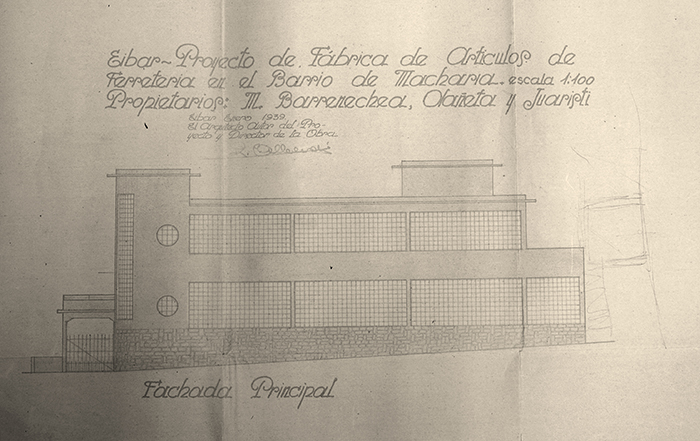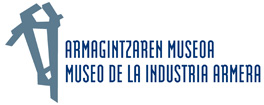
ARCHITECT: Raimundo Alberdi Abaunz 1939
In 1905 Manuel Barrenechea, Bernardo OlaÃÂñeta and Vicente Juaristi founded the company Barrenechea, OlaÃÂñeta y Juaristi, which would become known by its initials, BOJ.
Initially they set up business in JardiÃÂñeta St, some distance from the town centre, in a workshop where they produced templates for gun makers and damascene engravers, as well as tools for vets, which may seem surprising given the predominantly industrial nature of the area, but provides a good example of how new products were made and markets found using their technical expertise in the metal trade, for which Eibar businesses have always been renowned.

When the Civil War in the Basque Country was over, in 1937, the entrepreneurs decided to build new workshops and move their business to Matsaria, an area which at that time was growing dramatically. There, they continued to make the products for which they had always been known, but also branched out into the household utensil market, and some of their products have enjoyed great commercial success and renowned prestige: this is so with the turtle paperweight and, above all, their famous corkscrews. Among them, model 502E twin-lever corkscrew deserves a special mention. Known as the âÃÂÃÂowl corkscrewâÃÂÃÂ, it was designed by David OlaÃÂñeta and patented by the firm in 1932, and it proved to be immensely popular.

The BOJ corkscrew is one of the many objects through which the industrial sector sought to overcome the recession at the beginning of the 20th century afflicting the arms industry, which had been the source of the townâÃÂÃÂs wealth since the Middle Ages. It was then that the resourcefulness of the Eibar gun makers came into its own, and there was a period of outstanding creativity: hardware items such as corkscrews and paperweights came to symbolise the initiative of the company. From then on Barrenechea, OlaÃÂñeta y Juaristi specialised in corkscrews, shavers, locks and tin openers and it was these products that the company produced in its new building in Matsaria.
This distinctive building, which has become the symbol of the firm, appearing on its headed notepaper and commercial designs over the decades, was built in 1939, following the plans of the architect Raimundo Alberdi Abaunz, one of the leaders of the reconstruction of Eibar after the Civil War, and largely responsible for Eibar as we know it today. The BOJ factory is housed in a functional building, constructed with a structure of reinforced concrete. This material is versatile and the building has a rectangular shape and terraced roof, allowing the building to be expanded upwards if necessary.
Like most of the industrial constructions of this period, it has a sober, austere outward appearance lacking any form of decorative detail. And yet, this does not mean that it is a nondescript, featureless building. The merit of the architect lies in his ability to match the economy of means with the image of the company, creating a factory that follows the line of the street with a distinctive curved faÃÂçade and has the stairwell in a kind of central tower. This tower is the visual axis of the building, and its two circular windows, like eyes, contrast with the large vertical window that stretches from the roof down to the ground, illuminating the stair with natural light, and the large horizontal windows that open out on the walls on either side. This endows the faÃÂçade with character, avoiding any monotony or excessive regularity, and providing one of the best examples of industrial architecture in Eibar, in Gipuzkoa and in the whole of the Basque Country, a building that the company wished to turn into a symbol of modernity and the quality of its products.
 Anemona Studioa, 2015, Eibar www.anemonastudioa.com
Anemona Studioa, 2015, Eibar www.anemonastudioa.com Ondartez www.ondartez.com
Ondartez www.ondartez.com

